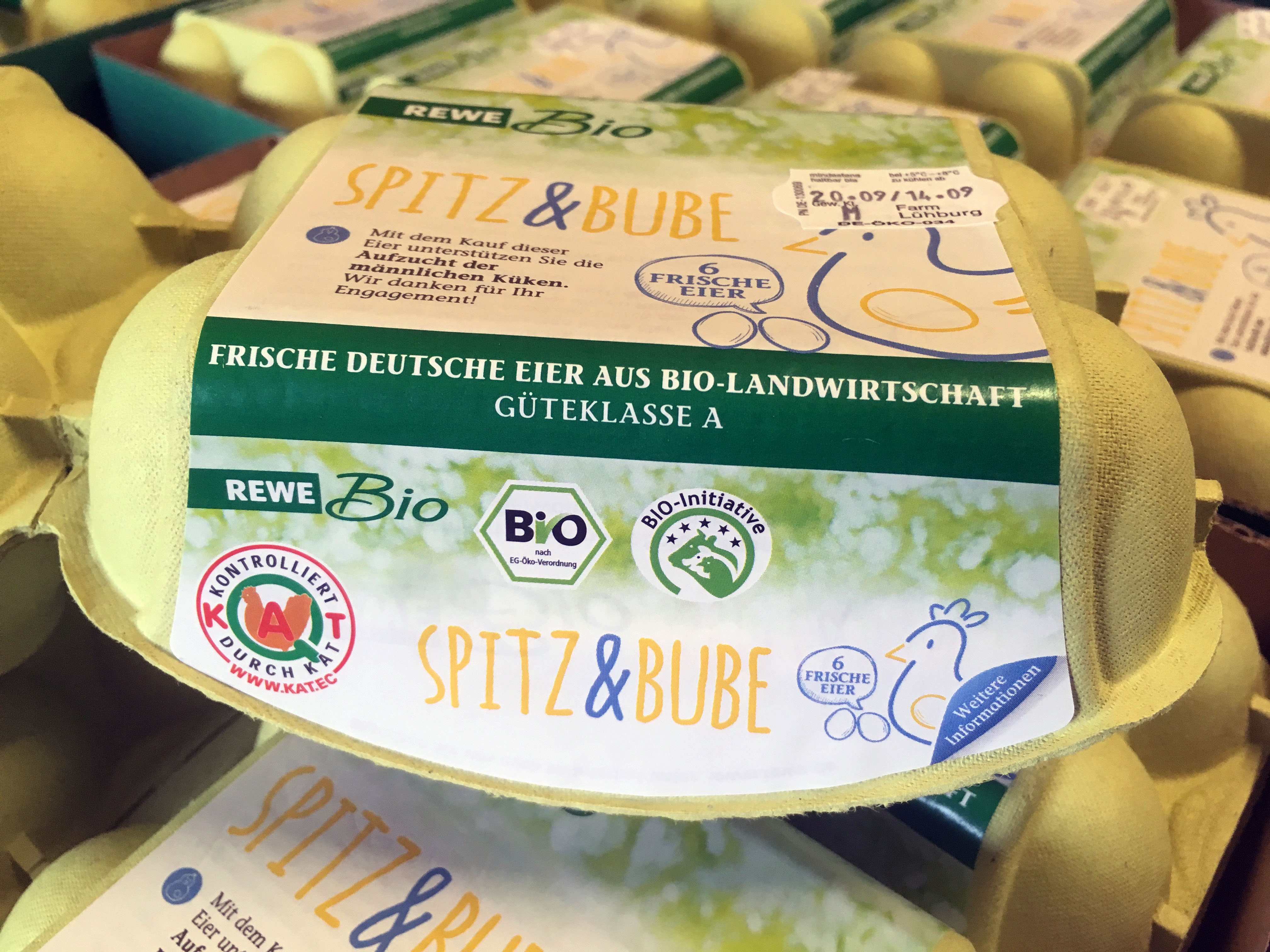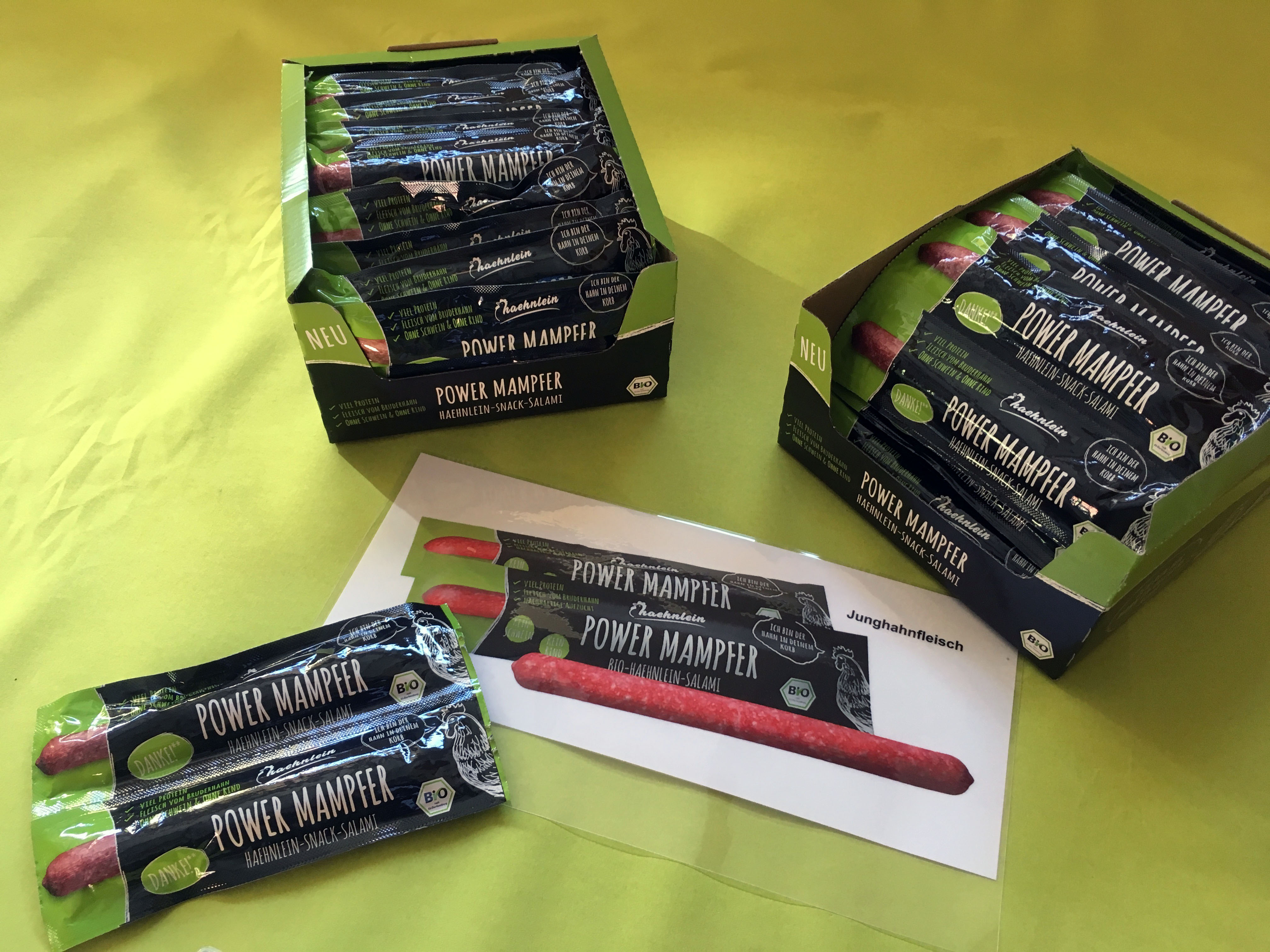



Why German consumers are willing to pay more for poultry from male birds
Farm organisations are attempting to change the fate of male chicks.Words Melanie Epp
The fate of male chicks in the egg industry has been a controversial subject for years now. And while technology for identifying male embryos is currently in development, the solutions aren’t readily available yet. Until they are, some farm organisations, like Fürstenhof in Germany, have decided to raise male hens for meat consumption. It’s a costly endeavor, but they’ve found a way to make it work.

Each year, the average German consumes 233 eggs and 20.9kg of poultry. What most consumers don’t know, though, is that the chicken they eat and the eggs they consume come from two totally different classes of bird. Because male chickens can’t produce eggs, they really have no use to the industry. As a result, they’re destroyed through a process called maceration. Egg producers have long known this; many consumers, though, are just becoming aware of these hard facts.
In Germany, the 19-farm organic producer group EZ Fürstenhof is working to eliminate male-chick deaths entirely. Founded and managed by Friedrich Behrens, EZ Fürstenhof farms produce eggs, potatoes, meat and apple juice. The farms are located in the regions of Mecklenburg-Vorpommern and Brandenburg in northeast Germany. The farm organisation works under the Bio-Initiative label, an organic standard label founded by Caspar von der Crone.
Working under the Bio-Initiative label is a good fit for EZ Fürstenhof as the two associations have parallel views on animal protection, environmental protection, fairness to producers, the preservation of family structures and the conservation of natural resources, such as soil, air and water. According to von der Crone, Bio-Initiative guarantees the highest organic standards for both producers and consumers.
EZ Fürstenhof is no doubt an ambitious organisation. Perhaps its most ambitious undertaking, however, has been to put an end to male-chick maceration in egg production. Instead, the “haehnlein” or “brother hens” are raised for meat.

Previously, this has not been done because haehnlein roosters take four times longer to reach maturity than the typical broiler bird. This means added costs and resources. In fact, Behrens said each bird would need to be sold for around €32 apiece to cover costs. Their solution has been to charge a €0.04 fee per egg sold under the haehnlein concept. Over the whole lifespan of the hen, the additional fee financially supports the rooster.
Annalina Behrens, Friedrich Behrens’s daughter, explains how the family business works: “The haehnlein concept was developed by my father and I discussing the issue of the male chicks and defining two possible ways to get it solved. That was back in 2011.”
Today, she says, haehnlein eggs and meat are niche products that have a strong position in the German market.
“There is a fast-growing group of consumers that is willing to pay a fair price for animal-welfare products, especially for organic-plus,” she adds. “The demand for haehnlein eggs is higher than our capacity.”
EZ Fürestenhof’s flock is made up of approximately 90 percent Novogen brown layers and 10 percent Novogen dual-purpose birds. The haehnlein roosters are fed the same feed as the young laying hens. “During the last weeks, they get a little extra corn and wheat,” says Annalina Behrens.
Describing the barn, she says: “They have a barn with feed, water and a voilière 1.8m high. The walls have windows that let in daylight. They have a winter garden added at both sides of the barn, and they have access to the winter garden 24-seven. Further, they can enjoy the pasture with different types of trees and bushes. It is mainly covered with grass but has sandy areas for dust bathing as well.”
Ms Behrens believes the haehnlein is a better solution than the current industry standard. “The politicians and scientists have been promising to use in-ovo detection in Germany for the last couple of years, but it still isn’t working,” she says. “Haehnlein has offered an alternative that allows the customers to decide against killing day-old chicks since 2012. Plus, we get high-quality meat, too.”

To reduce the impact of a rearing process that takes four times as long as conventional poultry production, says Behrens, they employ a unique feeding programme to get the most out of the birds.
“We use low-calorie feed for the roosters,” she says. “It contains, for example, sunflower, rapeseed and broad bean that humans don’t consume. And we feed alfalfa hay that is high protein.”
So far, the concept has caught on with German consumers. Not only are they demanding organic products, but they’re also willing to pay extra for increased animal-welfare standards.
“With our haehnlein concept, we see the support we get via social media,” says Annalina Behrens. “We are proud to have a loyal and growing fanbase all over Germany and a very good distribution network.”
While they’re not yet able to raise 100 percent of the “brother hens,” EZ Fürstenhof plan to reach this goal by next year. This will mean rearing over 300,000 roosters per year.
“After reaching 100 percent in EZ Fürstenhof,” says Behrens, “our vision is to rear every male day-old chick from our new hatchery, even for customers outside the EZ Fürstenhof [group].”












